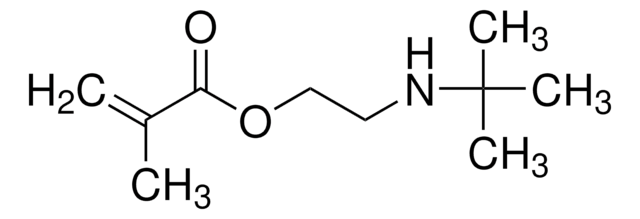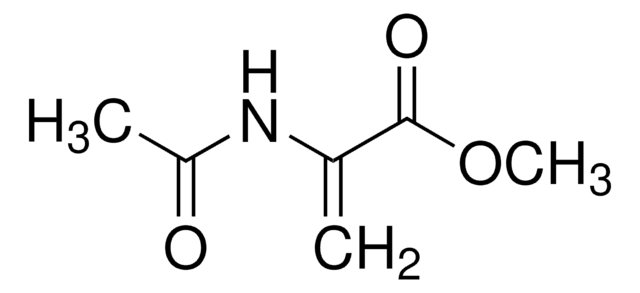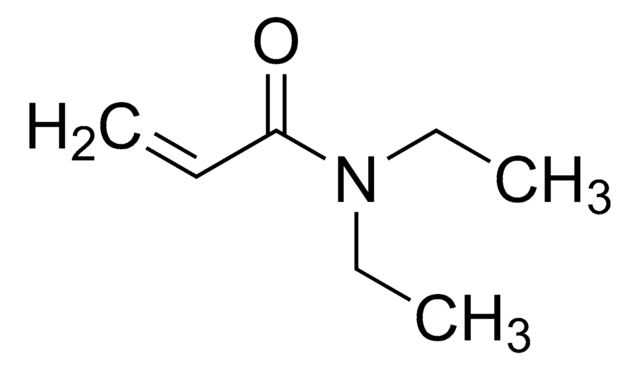408972
2-(Diethylamino)ethyl acrylate
95%, contains 25 ppm monomethyl ether hydroquinone as inhibitor
Sinónimos:
(N ,N -Diethylamino)ethyl acrylate, [2-(Acryloyloxy)ethyl]diethylamine
About This Item
Productos recomendados
presión de vapor
0.77 psi ( 20 °C)
Análisis
95%
contiene
25 ppm monomethyl ether hydroquinone as inhibitor
índice de refracción
n20/D 1.443 (lit.)
bp
199 °C (lit.)
densidad
0.922 g/mL at 25 °C (lit.)
cadena SMILES
CCN(CC)CCOC(=O)C=C
InChI
1S/C9H17NO2/c1-4-9(11)12-8-7-10(5-2)6-3/h4H,1,5-8H2,2-3H3
Clave InChI
QHVBLSNVXDSMEB-UHFFFAOYSA-N
¿Está buscando productos similares? Visita Guía de comparación de productos
Categorías relacionadas
Palabra de señalización
Danger
Frases de peligro
Consejos de prudencia
Clasificaciones de peligro
Acute Tox. 2 Dermal - Acute Tox. 4 Oral - Eye Dam. 1 - Skin Corr. 1B - Skin Sens. 1
Código de clase de almacenamiento
6.1A - Combustible acute toxic Cat. 1 and 2 / very toxic hazardous materials
Clase de riesgo para el agua (WGK)
WGK 2
Punto de inflamabilidad (°F)
165.0 °F - closed cup
Punto de inflamabilidad (°C)
73.9 °C - closed cup
Equipo de protección personal
Faceshields, Gloves, Goggles, type ABEK (EN14387) respirator filter
Certificados de análisis (COA)
Busque Certificados de análisis (COA) introduciendo el número de lote del producto. Los números de lote se encuentran en la etiqueta del producto después de las palabras «Lot» o «Batch»
¿Ya tiene este producto?
Encuentre la documentación para los productos que ha comprado recientemente en la Biblioteca de documentos.
Los clientes también vieron
Nuestro equipo de científicos tiene experiencia en todas las áreas de investigación: Ciencias de la vida, Ciencia de los materiales, Síntesis química, Cromatografía, Analítica y muchas otras.
Póngase en contacto con el Servicio técnico

![N-[3-(Dimethylamino)propyl]methacrylamide 99%, contains MEHQ as inhibitor](/deepweb/assets/sigmaaldrich/product/structures/295/145/6b4aae15-7cb5-4b7b-9c06-8e6d24e50951/640/6b4aae15-7cb5-4b7b-9c06-8e6d24e50951.png)












